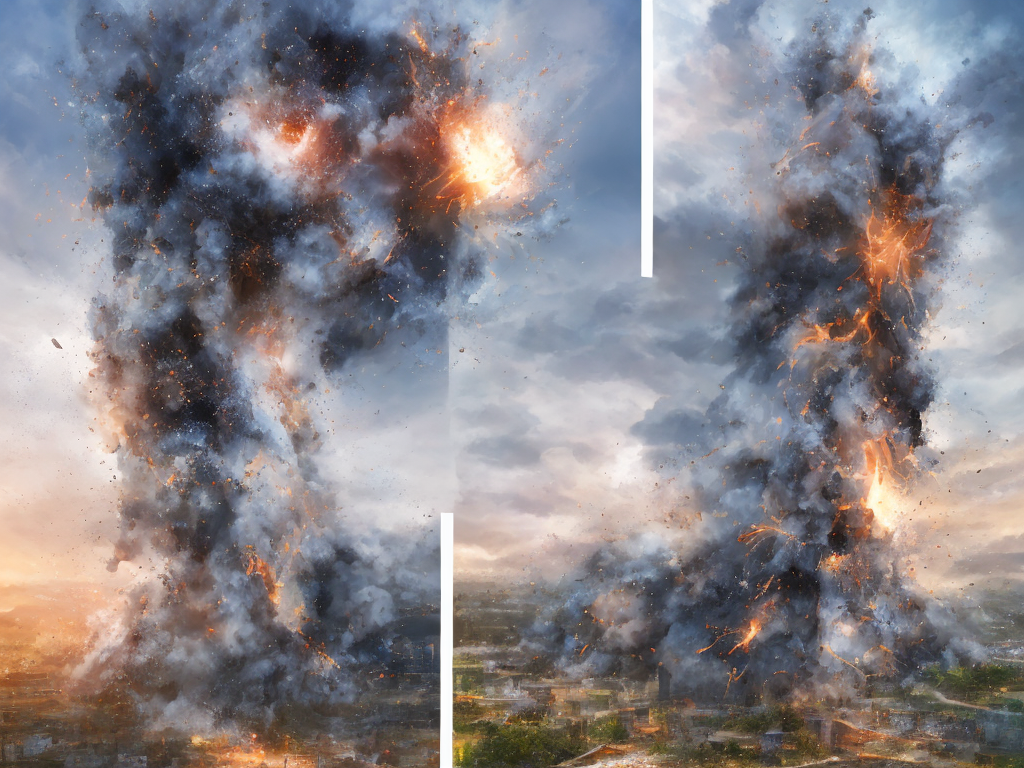
When we hear the terms “implosion” and “explosion”, we usually imagine scenes from action movies such as collapsing buildings, nuclear bombs, and volcanic eruptions. While these two phenomena share some similarities, they are fundamentally different in their mechanics and effects. In this article, we will explore the difference between implosion and explosion and examine their various applications in science, engineering, and nature.
An explosion occurs when a sudden release of energy creates a blast wave that violently pushes outwards in all directions. This can be caused by a chemical reaction, a combustible material, or a nuclear reaction. The energy release can be instantaneous or gradual, depending on the type of explosion. For example, a firecracker explosion generates a rapid burst of energy within a fraction of a second, while a volcanic explosion can take hours or days to build up pressure and release a massive amount of gas, ash, and lava.
Explosions usually generate high temperatures, sound, and shock waves that can cause damage to buildings, vehicles, and living beings in the surrounding area. Some explosions can also emit harmful substances such as radioactive particles, toxic chemicals, or smoke that can poison the atmosphere and inflict long-term health problems. Therefore, explosions are often considered as dangerous and destructive events that require caution and prevention measures.
On the other hand, an implosion is a scenario where an object collapses inwards due to the pressure differential between its inside and outside. This can happen when an object’s surface area is suddenly reduced, creating a vacuum that sucks in the air or liquid surrounding it. Implosions can also occur when an object is subjected to extreme stress or heat that alters its physical properties and causes it to buckle or deform.
One common example of an implosion is a glass bottle breaking in a vacuum. When the air is removed from inside the bottle, the pressure outside becomes higher than inside, causing the glass to buckle and implode. Another example is a steel drum collapsing under the weight of its contents when it is punctured or damaged. In both cases, the implosion happens quickly and is often accompanied by a loud noise and fragments that fly outwards.
Implosions can also happen on a larger scale, such as in the case of collapsing buildings or bridges. When the structural integrity of a building is compromised due to aging, corrosion, or external forces such as earthquakes or windstorms, the result can be a catastrophic implosion that can cause multiple fatalities and injuries. This is why engineers and construction workers carefully inspect, maintain, and reinforce structures to prevent implosions.
Overall, the main difference between implosion and explosion is the direction of the force and the outcome. While an explosion pushes outwards and causes widespread damage, an implosion pulls inwards and can damage or destroy the object itself. Both phenomena involve the sudden release of energy, but in opposite directions, and with different effects on the environment.
The applications of implosion and explosion can be found in various fields, from physics and engineering to medicine and geology. In physics, explosions are used to study the behavior of matter under extreme conditions such as high pressure, temperature, and density. Scientists use explosives to simulate the conditions inside stars, galaxies, and planets, and to create nuclear fusion reactions that could potentially provide clean energy for the future.
In engineering, explosions and implosions are used in mining, demolition, and material processing. Explosives are used to break down rocks and minerals in mines and quarries, and to demolish buildings and infrastructures that are no longer in use or pose a threat to public safety. Implosions, on the other hand, are used to collapse tall structures in a controlled manner, such as chimneys, cooling towers, and bridges, to avoid damage to the surrounding area and to reuse the material for other purposes.
In medicine, explosions and implosions are used in various imaging techniques such as ultrasound, MRI, and shockwave lithotripsy. Ultrasound uses high-frequency sound waves that create tiny bubbles in fluids and tissues that can be visualized and analyzed. MRI uses powerful magnets that align and realign the atoms in the body to produce detailed images of the organs and tissues. Shockwave lithotripsy uses high-intensity sound waves that break down kidney stones into smaller pieces that can be eliminated from the body without surgery.
In geology, explosions and implosions are used to study the internal structure of the Earth and to predict earthquakes and volcanic eruptions. Scientists use seismometers to record the shock waves generated by earthquakes and analyze their frequency and amplitude to determine the location and magnitude of the event. Similarly, they use explosions to map the subsurface layers of rocks and fossils and to identify oil and gas reserves for extraction.
In conclusion, implosion and explosion are two distinct phenomena that share a common feature of releasing energy in a sudden and powerful manner. While they can both be dangerous and destructive, they also have various applications that benefit humanity in many ways. Understanding the difference between implosion and explosion can help us appreciate the complexity and diversity of the natural and technical world we live in, and inspire us to use our knowledge and skills to create a safer and healthier environment for ourselves and future generations.
 Self-Instruct
Self-Instruct